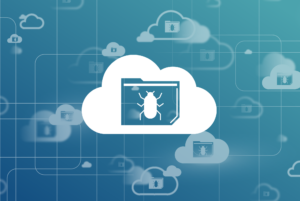
After the pandemic hit in 2020 cloud computing gained a lot of adoption, globally. The velocity of cloud adoption has not ceased since. If anything, it has accelerated. New technologies bring with them new challenges, and with cloud computing, cyber security challenges are at the top of the list.
From expanded attack surfaces to multiple new account management strategies, many organizations have addressed these challenges by partnering with cyber security specialists that focus on attack surface management and vulnerability scanning. Being proactive and remediating vulnerabilities before they result in breaches.
Organizations have found that moving to an innovative, cost-effective platform allows them to remain competitive in their market. While migration to the cloud has many benefits, organizations need to be aware of the most common security vulnerabilities they might encounter.
Security Vulnerabilities of Cloud Environments.
In an ideal world, organizations would be able to do business with limited to no risk. This is unfortunately not the case. Every business decision has some level of risk associated with it, and cloud technology is no different.
Potential for Data Loss.
Among the security vulnerabilities associated with cloud technologies is the potential for data loss is the most common. This can also be defined as data seepage. Data loss is characterized as a phenomenon where data is purged, loses integrity, or is modified to such an extent that it becomes unintelligible to users or systems.
Data loss in the cloud can occur when a threat actor gains control of data or data-processing systems. Another way this might happen is when apps that process such data are not thoroughly tested, and flaws cause cloud data degradation.
API Vulnerabilities.
Another common risk to cloud environments is the use of insecure APIs. Since cloud environments are completely reliant on the internet interfaces such as APIs provide external users and systems access to your cloud environment. Insecure APIs provide threat actors with a convenient interface to compromise cloud ecosystems.
APIs must meet the following criteria: They need to support strong authentication processes coupled with industry-standard data encryption. It is also critical that APIs have the capability to monitor and log transactions and callbacks. Being security conscious during the implementation of these components can greatly aid organizations to address this vulnerability.
Cloud Attack Surface.
The cloud attack surface is an old but big problem. Organizations should also take great care that their cloud assets are not excluded from the scope of their cyber security attack surface. Care should therefore be taken to include all cloud environments in attack surface monitoring solutions. Having clear visibility of the entire cloud ecosystem will address this vulnerability.
Cloud Account Management.
We cannot cover cloud security vulnerabilities and not mention user and service account vulnerabilities. The online nature of cloud ecosystems means that they are inevitably exposed to the internet to facilitate access to clients or their systems. Because of this, it is crucial, that user account management needs to be a high priority for organizations.
Threat actors that gain unauthorized access can cause devastating damage to the organization. Organizations need to implement zero-trust and least privilege practices to protect themselves against attackers moving between clouds.
Compliance Concerns.
Finally, each organization has the responsibility to maintain regulatory compliance by keeping the information of its clients confidential. Because cloud services often allow for significantly bigger data access, businesses must ensure that sufficient access controls and security levels are in place to keep personally identifiable information safe, even if it requires the masking of information
. It is crucial, that only role players who need access to sensitive data, would be granted access to it. Unintentional exposure to personal data, whether to internal role players or threat actors could result in serious litigation against the organization.
To Summarize.
Being proactive by scanning their cloud environment for possible vulnerabilities is the best way to address vulnerabilities before they result in breaches. Having clear visibility across the organization’s entire attack surface will allow an organization to keep an eye on its cloud environments.
Understanding the risks and vulnerabilities of cloud computing is essential for effectively safeguarding your organization from both internal and external threat actors. Cloud environments become increasingly complex as organizations become increasingly dependent on specialist knowledge, industry experience, and real-time monitoring.
